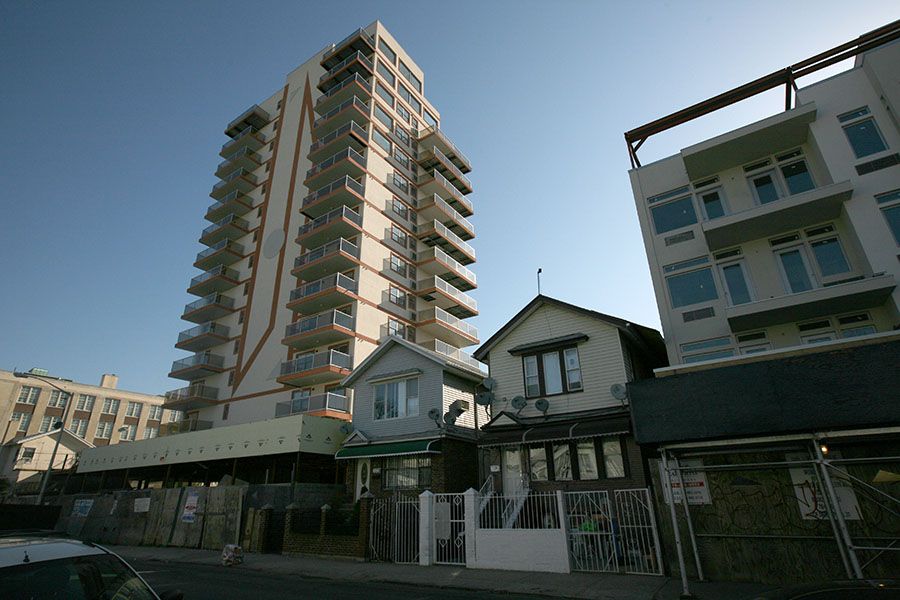Brighton Beach Development A “Dream”? Maybe Not

In a real estate piece profiling the square-mile community, the New York Times portrayed Brighton Beach as a place where condos, co-ops and generally tall buildings are thriving despite a battered market. And fueling that success was an ocean view and a bustling community – and housing stock that can be easily demolished.
Starting around 2005, so that residents inland could enjoy (and pay accordingly for) panoramas, developers began erecting apartment towers as tall as Ms. Correa-Pinto’s. On those lower-slung blocks, the buildings seem gargantuan, like redwoods among ferns.
In 2008, responding to community alarm, the city’s Planning Department proposed a 54-block rezoning of the area that would have capped the heights of many structures at four stories. But developers’ opposition proved overwhelming and last June the city withdrew the plan.
Judd Fischler, who has lived in the area since 1986 in a one-story cedar-sided bungalow that he bought for $90,000, says it was too late by 2008 anyway. Years of scattershot construction projects had already damaged the neighborhood irreparably.
“The horse has run out of the stable, and now you’re going to lock the door?” said Mr. Fischler, whose home faces the frame of a building-to-be and abuts a plywood-ringed lot.
But to hear developers tell it, it’s the bungalows — built as vacation getaways in the early 1900s and eventually winterized — that impede progress.
“They have no historical value, zero,” said Leon Mikhlin, who razed several of them to erect a pair of highly visible new condominiums, one with 14 stories and the other with 15, on Beach Sixth Street. Two-bedrooms in the shorter building start at $450,000.
For Mr. Mikhlin, new towers will be equalizing forces, giving a new crop of buyers glimpses of the same wave-lined horizon that others enjoy. Besides, he said, “people are usually against development, but when it’s done they like it.”
The New York Times piece raises interesting questions, while ignoring others.
Are bungalows of zilch historical value? They’re certainly not the best use of residential real estate in New York City, and they’re not that old. But they do capture a sense of the way people lived in Brooklyn’s southern waterfront communities – and the desire to be here is what drove construction of important infrastructure like the Brooklyn subways. But are they worth saving?
Regardless, development is here and continues to drive Brighton Beach’s (and perhaps Sheepshead Bay’s) future. The New York Times article is unapologetic on that front, touting the neighborhood’s market success, relative bargains and luxury housing stock. But it never asks the question, “At what cost?”
I’m not talking about existential questions about historical or cultural values. I’m talking about the very concrete costs a higher population puts on a community. Parking, traffic, schools, power grids, local employment… these are just a sampling of infrastructural stress points burdened by a growing population. From some of the accounts I’ve heard, Southern Brooklyn can’t accommodate vertical growth, but we’re heading in that direction anyway.
Do you think the costs are too high?




